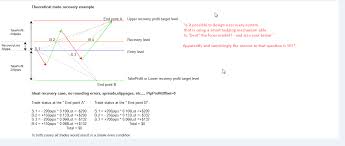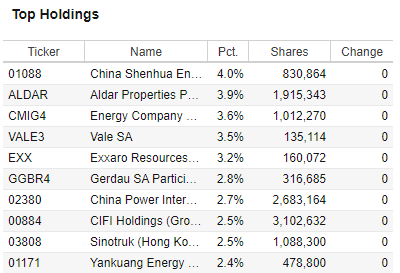
If you're investing in dividend-paying stocks, you should pay close attention to their dividend history. This will give you an idea of the stability of the company, and how its dividends are likely to increase in time.
The longest paid dividend stocks
For decades, dividend stocks paid out a steady stream of cash to investors. This shows the company is well-run and will probably continue to give dividends.
York Water Company NASDAQ:YORW pays a constant dividend since its founding in 1816.
This company is also known for its consistent and impressive growth of its dividends over time. Its dividends have risen from $1.56 in 2008 to $4 per share in 2018, showing that this company is able to weather even the most severe downturns and deliver shareholder value over time.

Highwoods Properties is a North Carolina-based property investment trust. It owns office buildings in Sun Belt markets. Since over a decade, the company has paid a quarterly distribution. As of November 25, it offers a 3.8% dividend yield.
Hormel Foods Inc. (NYSE:HRL), another stock, has also paid out a steady dividend over the years. The company has been increasing its dividend every year for more than 60 years. This is a testament to their ability to grow and maintain a growing payout.
Johnson & Johnson has increased its dividends continuously for more than 65 years. JNJ, in addition to its impressive dividend record, has made many smart acquisitions over the years that have allowed it to grow and diversify its company.
Diversification of the company into healthcare products, energy, and consumer staples. The company's market capitalization is large and it will likely remain a reliable cash generator for many years.
Stanley Black & Decker's (NYSE:SWK), has been increasing their dividends since over 40 years. They will continue to increase them. Stanley Black & Decker (NYSE:SWK) has increased its dividends for over 40 years and will continue to do so.

Its dividend is guaranteed due to its steady and conservative operations. The company has made many smart purchases over the years, including buying the Craftsman brand from Sears in 2017 and acquiring the Newell Brands tool business last year.
Best Buy's (NYSE:BBY) dividend is a solid one and should be able to hold up over time, thanks to its price match guarantee, fast shipping options, and tech support. Best Buy also has a BBB+ financial rating, and generates free cash flow that will help it sustain its dividend for years.
If you are looking for a high-yielding dividend stock, it is important to consider your own personal goals and timelines before making any investments. They may offer high dividend yields but are also risky investments if you do not understand the businesses and markets in which they operate.
FAQ
What is the role and function of the Securities and Exchange Commission
Securities exchanges, broker-dealers and investment companies are all regulated by the SEC. It also enforces federal securities laws.
Why is a stock security?
Security refers to an investment instrument whose price is dependent on another company. It may be issued either by a corporation (e.g. stocks), government (e.g. bond), or any other entity (e.g. preferred stock). The issuer promises to pay dividends and repay debt obligations to creditors. Investors may also be entitled to capital return if the value of the underlying asset falls.
What is security?
Security is an asset that produces income for its owner. Most common security type is shares in companies.
One company might issue different types, such as bonds, preferred shares, and common stocks.
The earnings per share (EPS), and the dividends paid by the company determine the value of a share.
When you buy a share, you own part of the business and have a claim on future profits. You receive money from the company if the dividend is paid.
Your shares may be sold at anytime.
What is a "bond"?
A bond agreement between two parties where money changes hands for goods and services. Also known as a contract, it is also called a bond agreement.
A bond is usually written on a piece of paper and signed by both sides. This document includes details like the date, amount due, interest rate, and so on.
The bond can be used when there are risks, such if a company fails or someone violates a promise.
Sometimes bonds can be used with other types loans like mortgages. The borrower will have to repay the loan and pay any interest.
Bonds can also help raise money for major projects, such as the construction of roads and bridges or hospitals.
A bond becomes due when it matures. That means the owner of the bond gets paid back the principal sum plus any interest.
Lenders are responsible for paying back any unpaid bonds.
How are securities traded?
The stock exchange is a place where investors can buy shares of companies in return for money. Companies issue shares to raise capital by selling them to investors. Investors then sell these shares back to the company when they decide to profit from owning the company's assets.
Supply and demand are the main factors that determine the price of stocks on an open market. The price of stocks goes up if there are less buyers than sellers. Conversely, if there are more sellers than buyers, prices will fall.
There are two ways to trade stocks.
-
Directly from the company
-
Through a broker
Can bonds be traded
Yes, they do! They can be traded on the same exchanges as shares. They have been traded on exchanges for many years.
The main difference between them is that you cannot buy a bond directly from an issuer. A broker must buy them for you.
It is much easier to buy bonds because there are no intermediaries. This means that you will have to find someone who is willing to buy your bond.
There are different types of bonds available. There are many types of bonds. Some pay regular interest while others don't.
Some pay interest annually, while others pay quarterly. These differences make it easy to compare bonds against each other.
Bonds can be very useful for investing your money. If you put PS10,000 into a savings account, you'd earn 0.75% per year. If you were to invest the same amount in a 10-year Government Bond, you would get 12.5% interest every year.
If all of these investments were accumulated into a portfolio then the total return over ten year would be higher with the bond investment.
Statistics
- Individuals with very limited financial experience are either terrified by horror stories of average investors losing 50% of their portfolio value or are beguiled by "hot tips" that bear the promise of huge rewards but seldom pay off. (investopedia.com)
- The S&P 500 has grown about 10.5% per year since its establishment in the 1920s. (investopedia.com)
- Ratchet down that 10% if you don't yet have a healthy emergency fund and 10% to 15% of your income funneled into a retirement savings account. (nerdwallet.com)
- Our focus on Main Street investors reflects the fact that American households own $38 trillion worth of equities, more than 59 percent of the U.S. equity market either directly or indirectly through mutual funds, retirement accounts, and other investments. (sec.gov)
External Links
How To
How to Trade on the Stock Market
Stock trading is the process of buying or selling stocks, bonds and commodities, as well derivatives. The word "trading" comes from the French term traiteur (someone who buys and sells). Traders purchase and sell securities in order make money from the difference between what is paid and what they get. This is the oldest form of financial investment.
There are many ways you can invest in the stock exchange. There are three main types of investing: active, passive, and hybrid. Passive investors are passive investors and watch their investments grow. Actively traded investor look for profitable companies and try to profit from them. Hybrids combine the best of both approaches.
Passive investing is done through index funds that track broad indices like the S&P 500 or Dow Jones Industrial Average, etc. This approach is very popular because it allows you to reap the benefits of diversification without having to deal directly with the risk involved. You can just relax and let your investments do the work.
Active investing is the act of picking companies to invest in and then analyzing their performance. The factors that active investors consider include earnings growth, return of equity, debt ratios and P/E ratios, cash flow, book values, dividend payout, management, share price history, and more. They then decide whether they will buy shares or not. They will purchase shares if they believe the company is undervalued and wait for the price to rise. If they feel the company is undervalued, they'll wait for the price to drop before buying stock.
Hybrid investment combines elements of active and passive investing. For example, you might want to choose a fund that tracks many stocks, but you also want to choose several companies yourself. In this scenario, part of your portfolio would be put into a passively-managed fund, while the other part would go into a collection actively managed funds.